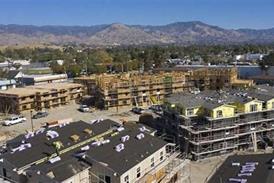
According to the UK Green Building Council’s Whole Life Carbon Roadmap, the UK commercial property sector will need to achieve a 68% reduction in operational carbon emissions by 2030 and a 99% reduction by 2050 to reach net zero and play its part in helping the UK meet its own 2050 net-zero goal.
This is a huge undertaking with the majority of reductions being delivered by improving the energy performance of our existing buildings, which will account for 80% of buildings in use in 2050, rather than relying on net-zero standard new build.
On a practical level, achieving this audacious goal requires a radical transition of the UK’s existing commercial property assets to low-carbon methods of lighting, heating and cooling, a focus on smart buildings and monitoring, and on improvements that can be made through refurbishment and retrofits.
A handful of large commercial property asset owners are taking a lead in this area, but the majority of commercial landlords haven’t provided concrete plans on how they will work with tenants to reduce the operational emissions from buildings in use.
We need to quickly figure out how landlords, managers and tenants work together on this, with the right support from government, to enable us as a sector to make the changes required to meet net zero by 2050.
Here are four ideas to spur action:
1. Quantify the impact on valuations to focus minds
- A valuation time bomb is already ticking for commercial property assets. Firstly, the costs to transition assets to net zero are significant and are currently being massively underestimated by property owners and investors. Secondly, the risk to property yields and valuations is significant if buildings are not sustainable and are therefore unattractive to tenants.
- The speed and success, or otherwise, of carbon-emissions reductions will have a material impact on valuations at building and portfolio level. Establishing an industry-wide consensus on how to measure and track this would drive greater awareness, action and investment.
- A mechanism such as adopting NABERS energy-efficiency ratings consistently across the UK market could provide a more robust valuation benchmark than building certifications like BREEAM. It has the potential to connect net-zero performance with valuations, and in time a good NABERS rating could become a must-have for blue-chips tenants.
2. Gainshare contracts
- Tenants are sometimes understandably reluctant to co-fund energy-efficiency improvements alongside landlords – for example, installation of solar panels and intelligent lighting – when they know that at some stage they will move on and no longer benefit from the investment.
- Co-funding such investments with gainshare contracts, where payment for energy improvement projects is linked to actual cost benefits received by landlord and tenant, can overcome this.
- Currently, gainshare contracts are most common for energy-efficiency projects like solar panels, which deliver energy savings for the tenant and improve the ESG credentials of the asset for the landlord. In the future, gainshare contracts could become more sophisticated, subject to suitable legal contracts being developed and cover many long-term capital and operational expenditure projects.
3. Fiscal incentives
- The UK government is introducing performance-based rating schemes for commercial buildings, starting with the UK’s largest buildings before extending across the market.
- Once these schemes are in place with minimum standards established, fiscal incentives in the form of discounts linked to new or existing tax mechanisms can be put in place.
- The Inflation Reduction Act, passed in the US in August, has set a new standard for such a ‘carrot-led’ approach to decarbonisation and will encourage other jurisdictions to follow.
4. Using technology and data to our advantage
- One of the barriers to action can be a lack of understanding between landlords and tenants on their individual decarbonisation plans. We have seen instances where landlords have held back from approaching tenants about a shared energy-efficiency project on cost grounds, only to find that when the proposal is put forward the tenant welcomes it as part of their own decarbonisation plan.
- By creating databases that match tenants’ appetite for energy-efficiency projects with available landlord programmes more opportunities can be identified as awareness of the mutual benefits increases.
- Data is the key to making the right decisions on where and how to invest in energy efficiency. Landlords can lead the way here by sharing energy data with all tenants regularly to spur efficiency and provide the evidence for decarbonisation projects –for example, onsite renewables. Therefore, energy data monitoring, management and analysis capability must be in place across entire portfolios.
Adoption of these, and other, initiatives will be necessary for the commercial real estate sector to achieve net zero by 2050 and play its part to help meet the Paris Agreement goals and mitigate the worst impacts of climate change.
These actions also provide a sustainable future for commercial real estate owners and investors, creating portfolios of buildings with a ‘green premium’ that attract higher rental yields and valuations. The alternative is to see valuations cut as tenant demand falls, or even assets being stranded due to a failure to meet minimum standards.
The challenge is significant. Yet, by thinking innovatively about improved energy performance and fostering greater collaboration across the sector, commercial real estate owners can protect and enhance both assets and the planet.





















No comments yet